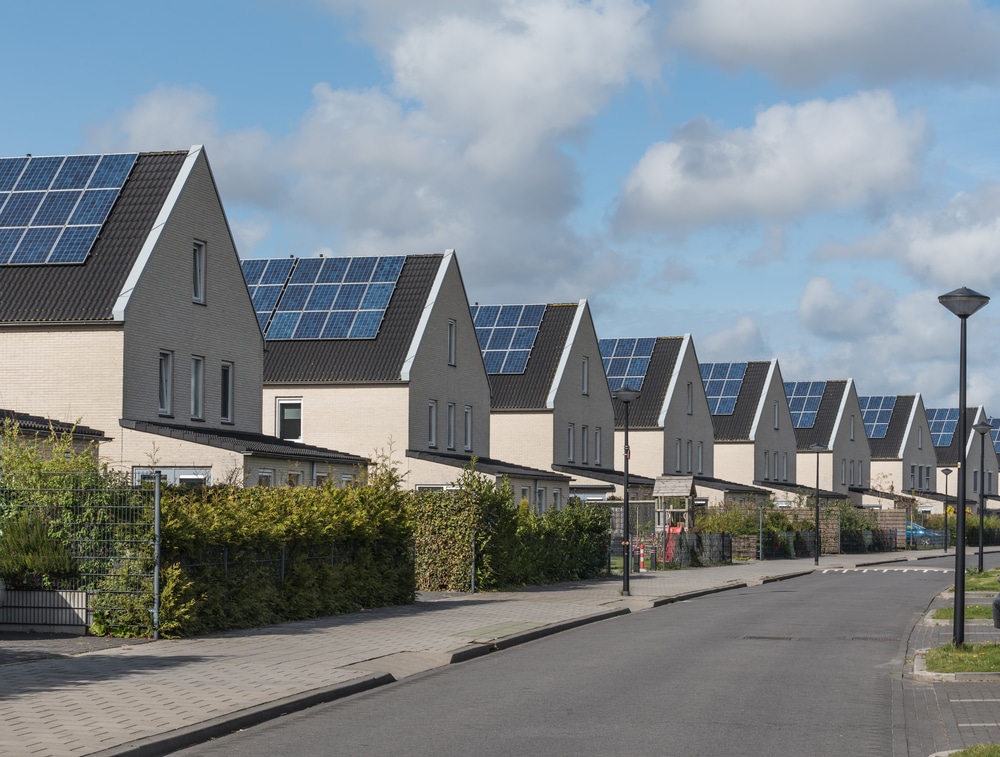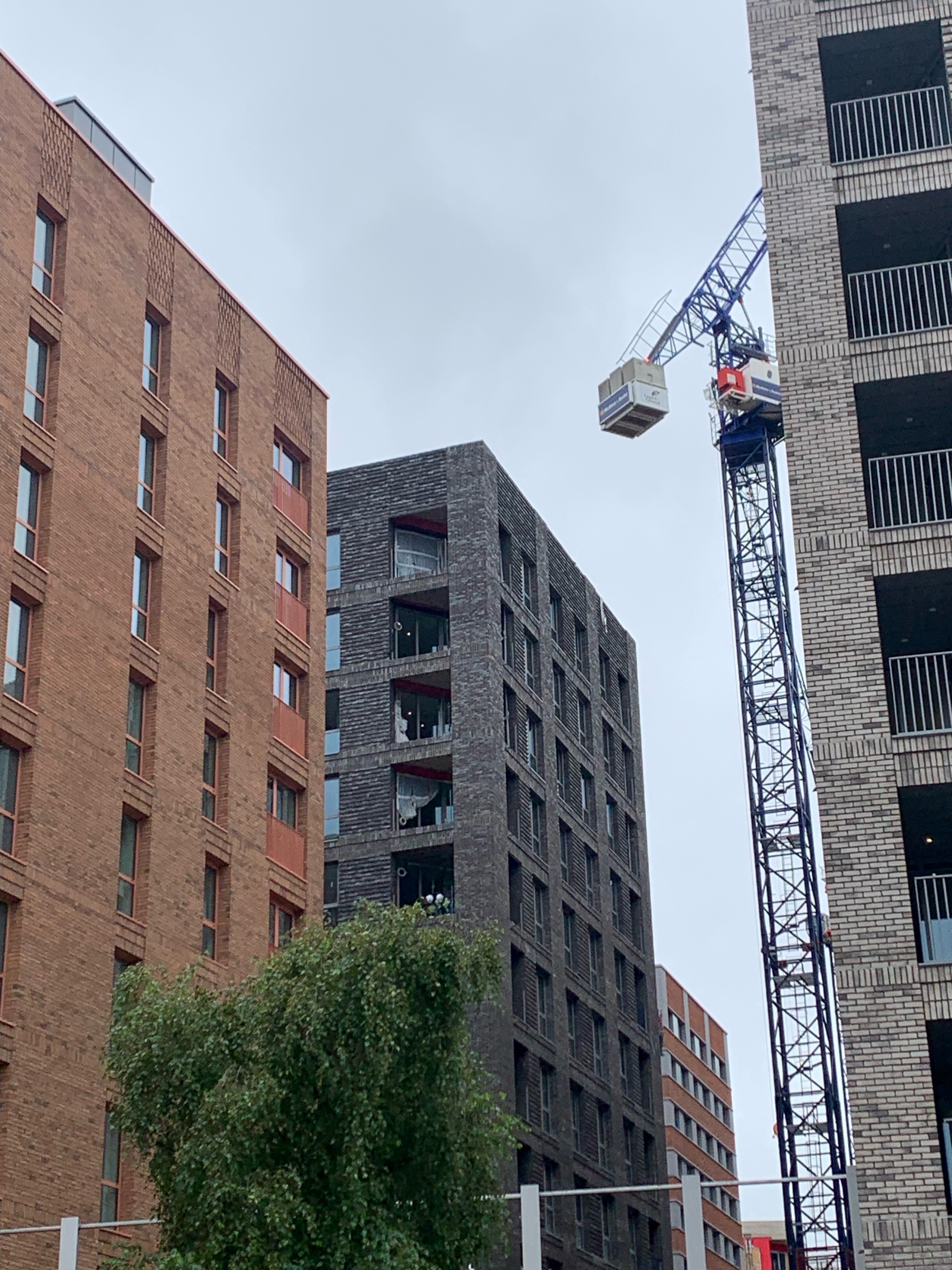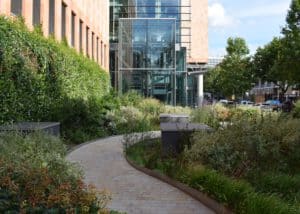Follow these steps to build low carbon buildings, produce more sustainable homes and reduce your carbon footprint.
There is no avoiding the fact that those in the construction landscape need to prioritise sustainability in the design, construction and ongoing maintenance of buildings. Construction industry emissions are at a frightening high, with reports suggesting that the built environment generates nearly 50% of annual global CO2 emissions. Of those total emissions, building operations are responsible for 27% annually, while building materials and construction (typically referred to as embodied carbon) are responsible for an additional 20% annually.
Those numbers are staggering. A 2021 report by the National Engineering Policy Centre stated that the UK construction sector should decarbonise more urgently in line with the national emission reduction targets of 68% by 2030 and 78% by 2035 (you can read the full lowdown on the report here).
So, where does this leave architects? Whether you’re creating a new build or refurbishing an existing one, it’s crucial that you take all the necessary steps to produce greener buildings that last the test of time, create minimal impact and support our global journey towards net zero emissions.
Need a helping hand? Here are 10 of our top ways to build (or retrofit) low carbon buildings.
1. Use low carbon and sustainable materials.
Sustainable materials are the ‘go-to’ for many construction developers when trying to be environmentally responsible due to their low environmental impact. Using eco-friendly materials is super beneficial for the construction industry as it’s positive for the environment and for the occupants of the building. Building a green home reduces carbon emissions, saves energy and money on energy bills, meaning you provide your customers with a long term investment.
There is a huge selection of eco-friendly and sustainable materials to choose from. These can be used across all elements of the building, including windows, insulation, foundations and bricks. You can choose from specialised recycled materials such as Aluminium, Wood Fibre, Sheep Wool, Ashcrete and many more.
However, a bad design can cancel out any gains you will make when choosing eco-friendly materials, which is why it’s so important to choose to get a sustainability consultant on board as early as possible. To see how eco design and eco materials can go hand in hand, check out our Deanfield House client story.
2. Consider Passivhaus design.
Passivhaus is the real deal when it comes to environmentally responsible construction. Passivhaus (EnerPHit) is a brilliant solution that provides the construction industry with approaches to create net-zero builds as well as retrofitting existing. The Passivhaus design was created to consume 90% less heating and cooling energy than the conventional building, helping to keep the occupants comfortable through the winter and cool in the summer.
However, every building that is designed as a Passivhaus needs to pass the Passivhaus standard. And it’s a popular approach. Throughout Europe, construction developers have been using Passivhaus to create incredible buildings that are top of the Passivhaus standard. If we move closer to home, London is also introducing Passivhaus into their construction space with a development being built in Canary Wharf set to be Europe’s largest Passivhaus scheme. It’s a fantastic means of producing builds that you know are going to tick the low carbon box.
3. Don’t forget energy efficiency.
Energy efficiency is essential in reducing your impact on the environment; plus, in the current energy crisis, it’s paramount for all inhabitants.
There’s many ways to reduce your energy efficiency such as:
- Replacing light bulbs with LED
- Using natural heating
- Investing in double or triple glazing
- Choosing energy efficient appliances
- Insulating your loft and walls
The construction industry uses the Energy Performance Certificate (EPC) to understand the energy efficiency and carbon emission of your home. The EPC is typically used for buildings that are being sold, let or constructed in the UK. If you need an Energy Performance Certificate for your home or project, you can visit the Gov website to find a registered domestic assessor in your area.
RELATED: WHAT IS A KILOWATT HOUR?
4. Implement safe waste management.
It’s no secret that the construction industry is responsible for a large amount of waste generation. Developers also need to take into consideration the end of a building’s life, where materials need to be deconstructed or demolished, which can generate a significant amount of waste too. Construction waste can include materials such as insulation, wood, glass, paints, metallic wastes and much more. If you can reuse any of these materials, do!
There’s many plans that consider safe waste management such as the BREEAM which can be introduced before construction begins at a site. This will allow developers to see how materials can be managed efficiently and disposed of legally during and after the construction process. There’s also an opportunity to explore how to reuse and recycle materials, giving developers knowledge and ability to make the most environmentally friendly decision.
RELATED: IS IT ENOUGH TO SIMPLY REDUCE OUR ENVIRONMENTAL IMPACT?
5. New build or retrofit?
If you are about to start on a build, we understand that trying to decide whether a new build or a reuse is more environmentally responsible can be confusing: but, it’s a choice many developers need to make. There’s many pros and cons to both such as financial returns, building risks and environmental responsibilities.
In a nutshell, new builds are typically worse for the environment, but in fact, the amount of greenhouse gases that are released pollutes more than the refurbishments. In addition, carbon emissions from a new building have been shown to be higher than a renovation after 30 years, suggesting that a focus on renovations would work towards reducing carbon emissions.
There’s multiple schemes to help with both situations such as the New Green Homes grant which encourages home owners to refurbish current homes and also the Building, better, building beautiful project which was created to promote high quality designs for new homes and neighbourhoods across England.
At the end of the day, choosing between a new build or reuse is down to you. Read the blog ‘New Build VS Re-Use: What’s Better Environmentally?’ to find out more.
6. Maximise your structural efficiency.
When we consider embodied carbon, we know that the majority is found in the structure of a building. It’s therefore vital that constructors and architects seek out new ways to achieve maximum structural efficiency.
This can include using optimum value engineering wood framing methods, efficient structural sections, and experimenting with slabs. Not only will these enable you to boost that structural efficiency, but you’ll also b e able to minimise overall material use.
7. Use low carbon mixes.
You may be surprised to learn that cement is the cause of 8% of the world’s CO2 emissions. When you’re relying on concrete, you therefore need to be mindful of the type you use.
Fly ash, slag, calcined clays and lower-strength concrete will increase your chances of producing low-carbon concrete mixes. Access to these materials is not always easy, but a structural engineer and/or sustainability expert will be able to point you in the right direction. This will immediately reduce your building’s carbon footprint.
8. Reduce your finishing materials.
Finishing materials add to your overall embodied carbon footprint, so strive to use as few as possible. Instead, you can use structural materials for the finish. For example, polished concrete slabs will save the embodied carbon from vinyl flooring or carpet.
Another option is to go for unfinished ceilings; this can be a very easy way to make those all-important embodied carbon savings.
9. Preserve and protect water.
A safe waste and water management approach is the Waste Water Heat Recovery (WWHR) which can be considered once the home is built. The WWHR extracts heat from the water that is used from your shower and repurposes it to warm the incoming mains water. It does this by passing the waste water through a heat exchanger and then using it to pre-warm the cold feed of your thermostatic shower. This offers an excellent way to lower the overall carbon emissions of a building.
Architects should also consider the use of water preserving innovations such as tap aerators and sensors to significantly reduce the level of wasted water in the building.
10. Buy local materials.
The transportation of materials from the manufacturing facility to the building site adds to the embodied carbon of your building. Instead, buy from local sources. Not only will this reduce the emissions produced during transportation, but it will also support the local economy.
Can Buildpass help me build low carbon buildings?
You bet! We offer consultations on the PAS 2035 and Passivhaus standard, all schemes surrounding standards for refurbishments of existing domestic properties, and sustainable construction advice on new builds. We also deliver specialised CPD training sessions in low carbon construction.
We can help you explore the best ways to build and deliver low carbon, long lasting buildings. If you are ready to find out more about low carbon construction, get booked in for a call with the Buildpass team now.





















